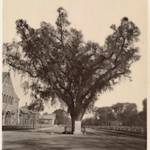Extinct In The Wild, Bromus Bromoideus
1930 CE • Belgium
Formerly found in Belgium, Luxembourg and France, it grew within fields of spelt wheat and was re-sown each year with the wheat seeds. It is the first extinct plant to be restored in British conservation history and "...thanks to the dedicated work of one extraordinary scientist, it has been saved, nurtured and returned to the wild... From the 1930s, as farmers sprayed pesticides and more and more weeds were screened out, it went into steep decline and was last seen, not far from where it was originally found, in 1972. Later, it was duly declared extinct." Philip Smith, a botanist, had a few seeds and grew them on his window sill and kept the species alive. Then, "its seed was safely stored in the Millennium Seed Bank at Wakehurst Place, and Kew [Garden]'s Stewart Henchie began leading a team that intended to put the brome back into Britain. Kew started growing as much as it could, as did Paignton Zoo... Hundreds of plants germinated, flourished, and are now in fruit."
Randall, David. "Back from the Dead: Scientist Revives Lost Plant of Old England." The Independent. 24 July 2015. .
Aplin, Dave. Bromus Bromoideus. Digital image. July 2006. <https://commons.wikimedia.org/wiki/File:BromusBromoideus.JPG>.


Learn about Maya Lin’s fifth and final memorial: a multi-platform science based artwork that presents an ecological history of our world - past, present, and future.

Discover ecological histories and stories of former abundance, loss, and recovery on the map of memory.

Learn how we can reduce our emissions and protect and restore species and habitats – around the world.

See how art can help us rethink the problems we face, and give us hope that each one of us can make a difference.

Help make a global memorial something personal and close to home. Share your stories of the natural world.


